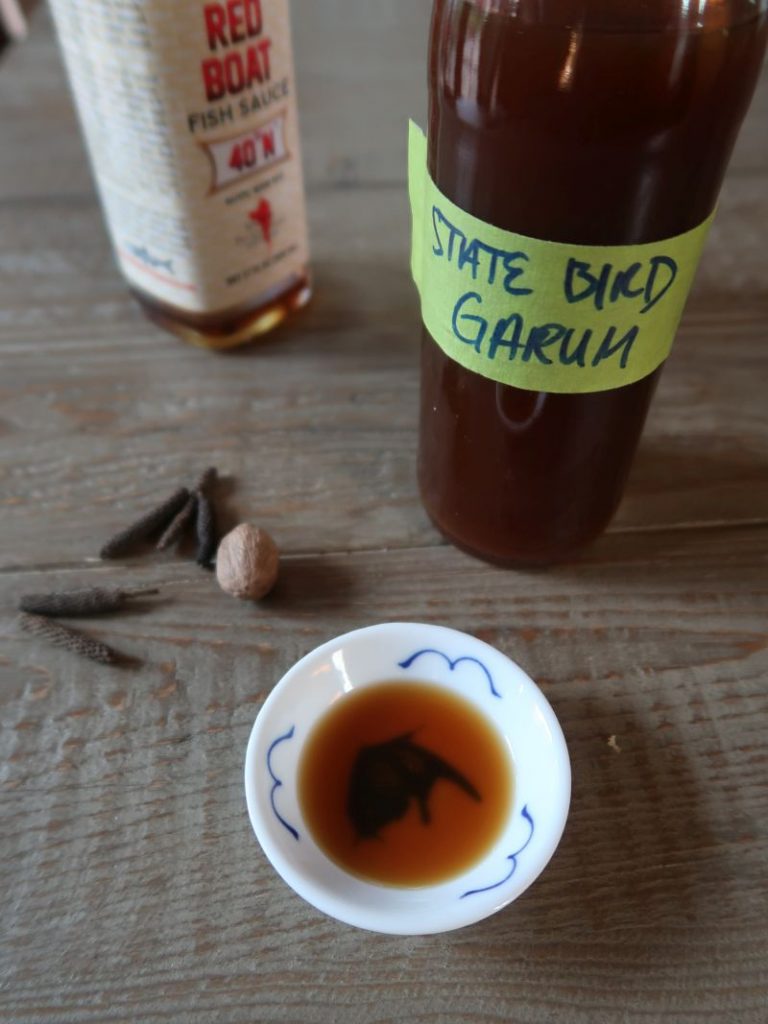
When I met Stewart Brioza and Nicole Krasinski, chef-owners of State Bird Provisions restaurant in San Francisco, we chatted about Southeast Asian peppercorns and garum. They source Cambodian Kampot pepper for special dishes and drinks at their acclaimed restaurant, which offers a clever menu of East-West influences.
I also recalled the State Bird garum recipe from their marvelous cookbook. Chatting with them, I made a mental note to make the condiment. Commercially-made garum costs a lot and I didn't know if I'd like it. Why not make my own to try it out?
What is garum?
So glad you asked! Garum is spiced fish sauce that was prized by the ancients during Roman times. There are historic recipes online that call for boiling fish with spices and dried herbs plus some vinegar but garum was also a fermented fish-based condiment. The original version was likely from the garus fish, hence the garum name, but things changed and got murky by the fifth century.
Looking up its backstory in Apicius de re Conquinaria, considered the oldest known cookbook, I found some funny translator notes.
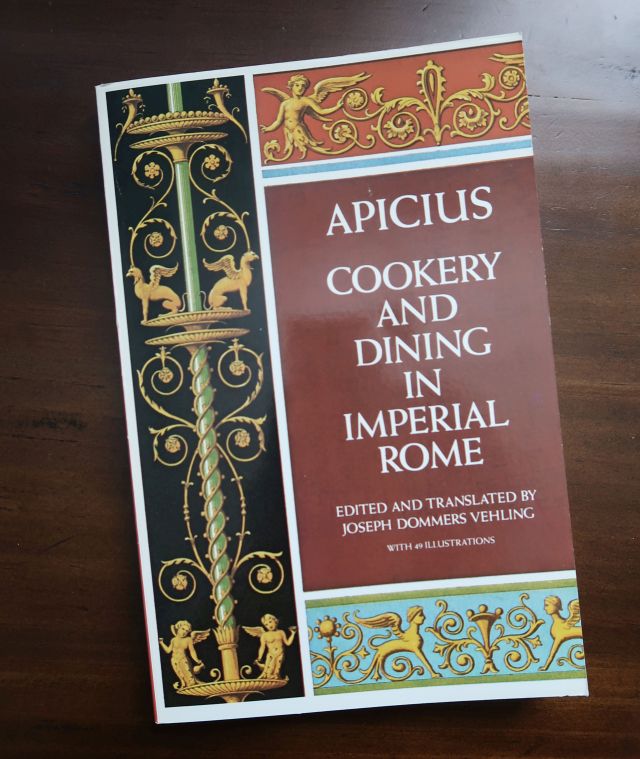
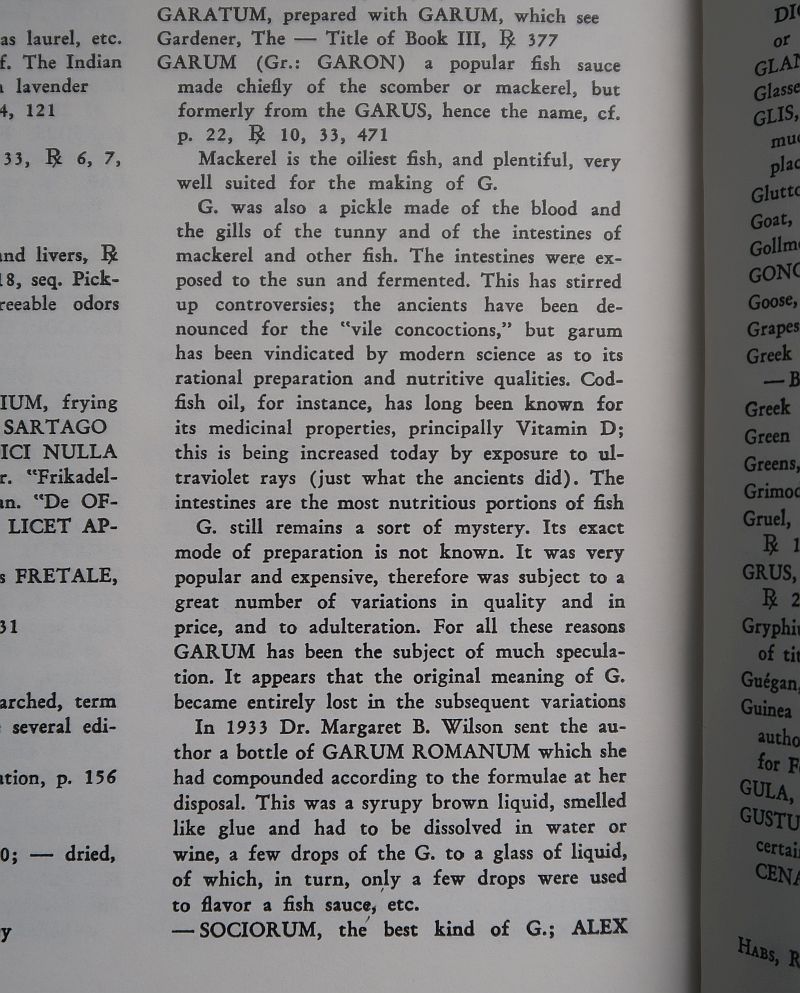
The Romans used garum for many things, like these recipes. They don’t seem outlandish.
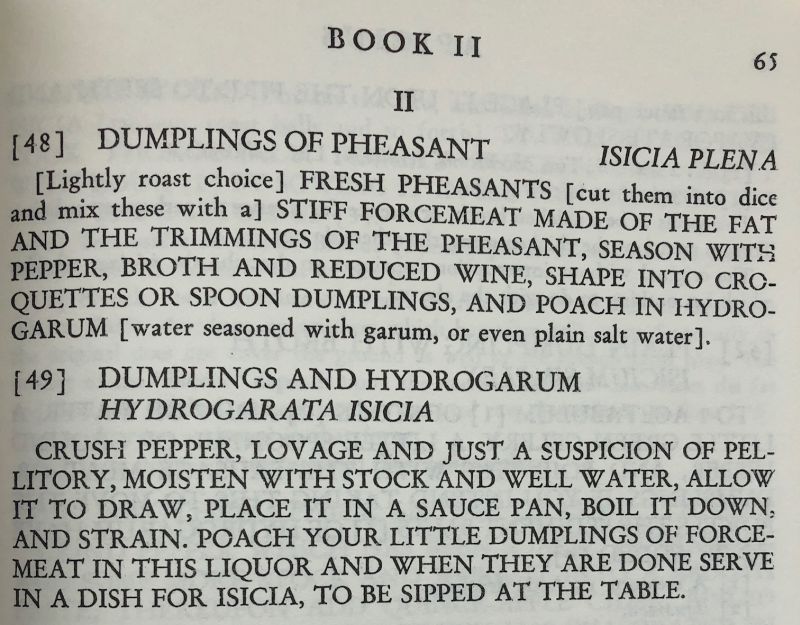
An electronic, searchable version of Apicius Cookery and Dining in Imperial Rome is available here.
DIY Seasoned Fish Sauce
I’ve doctored up soy sauces before like Japanese banno joyu so the idea of tweaking fish sauce wasn’t unusual. I just never did before. Aside from saving money, the State Bird garum intrigued me because it used Asian ingredients for a modern rendition of an ancient Roman condiment. How cool is that?
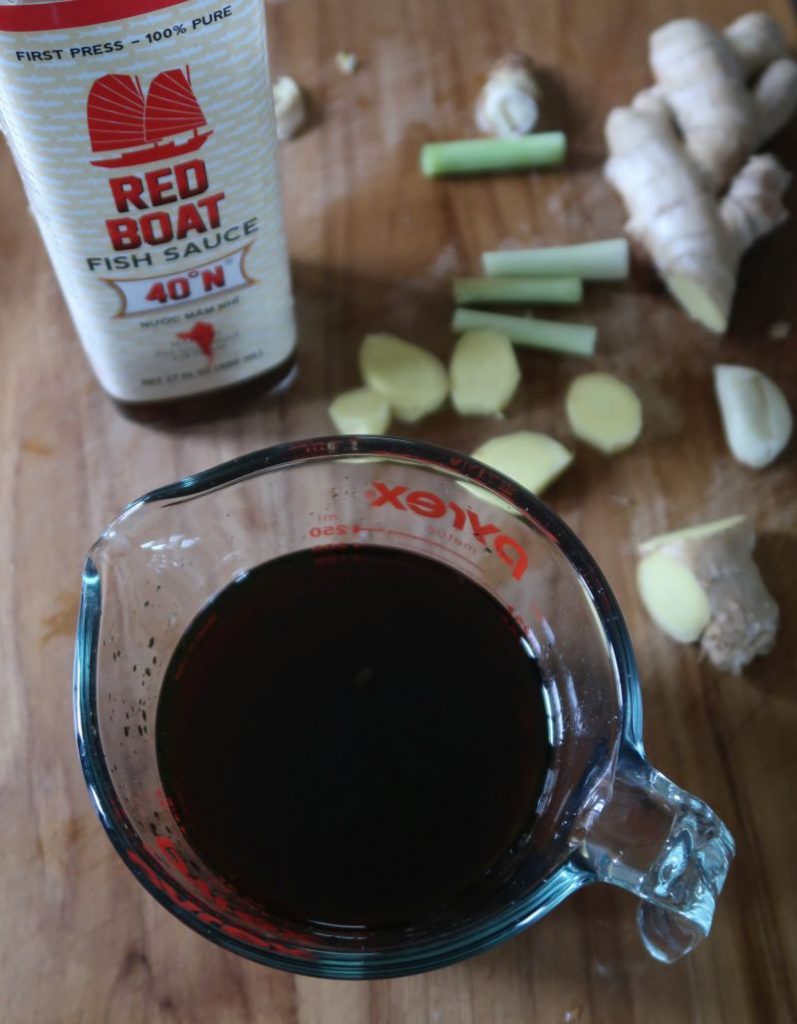
State Bird employs Red Boat fish sauce because it doesn’t contain additives and is close to the original garum. Since Imperial Roman cooks seasoned garum with vinegars and wines, plus herbs and spices, the restaurant’s recipe includes aromatics and spices too. (If you don’t have Red Boat, use a favorite fish sauce; in the Asian aisle at mainstream supermarkets, look for Dynasty brand or Thai Kitchen.) As modern cooks, you don’t have to start from scratch with raw fish to make an ancient condiment. Just use a good fish sauce.
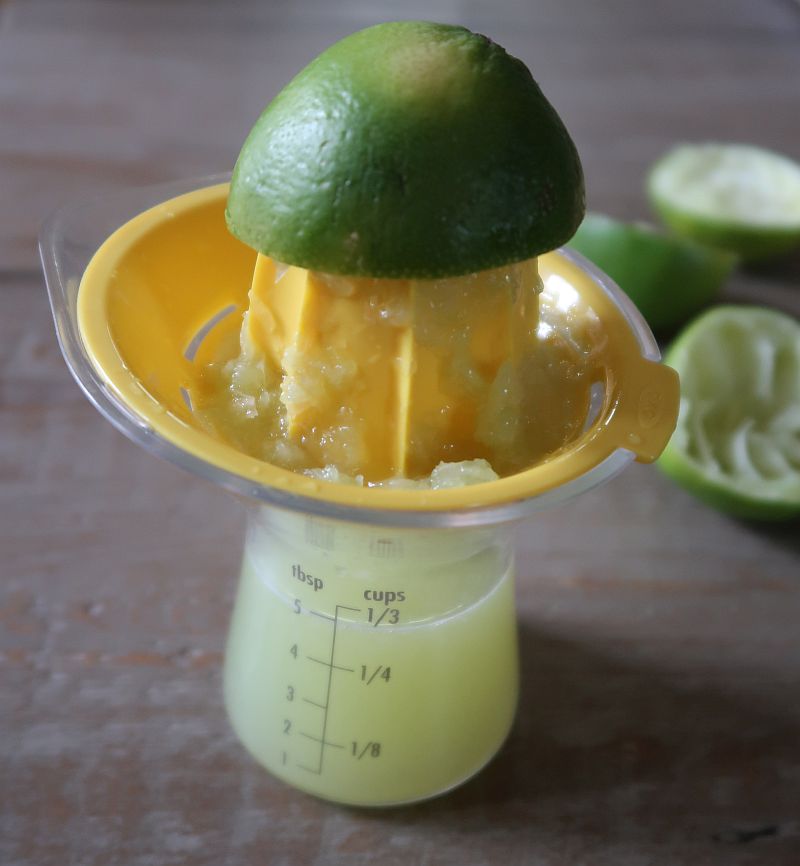
Instead of wine or vinegar, the State Bird garum recipe uses fresh lime juice. (Btw, this juicer from OXO is very handy and efficient.)
Long Pepper vs. Black Peppercorns
Getting long pepper is what may likely trip you up. The skinny spice in the dish below is a South Asian and Indonesian pepper that's not hot. Long pepper has a floral pungency. I bought mine at a spice shop and it’s sold online too. Before round peppercorns were popular, it was long pepper that the Romans prized. Don’t have it? Use whole peppercorns; I have a sub below.
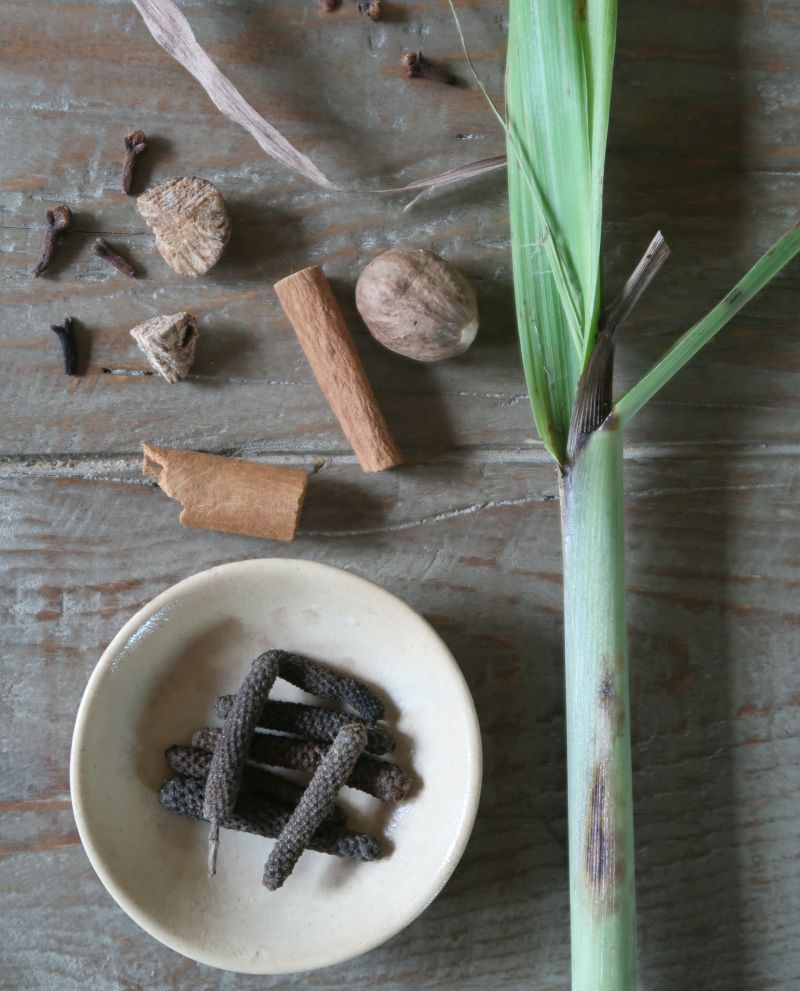
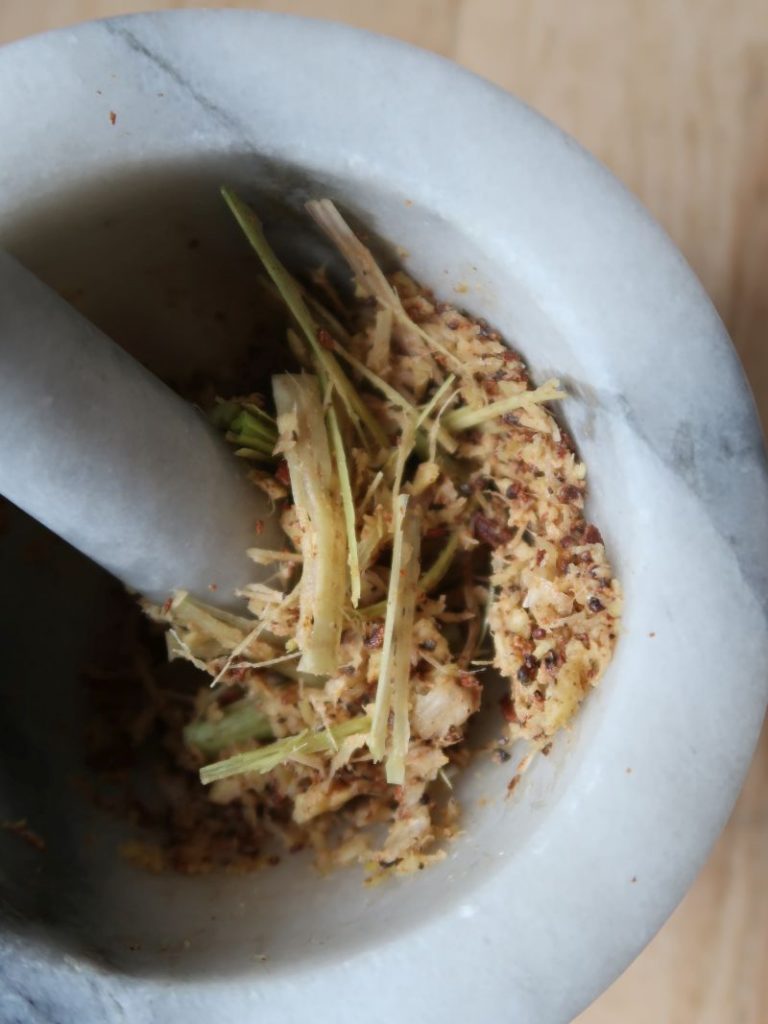
With regards to the other spices, use whole ones. A bulk spice section at a natural food store is great for getting tiny amounts. Or, pick up the spices when you get the long pepper.
How to Use State Bird Garum
I let the garum sit in the fridge for a week. Lime juice often turns bitter over time, but the spices surprisingly countered that flavor. When I opened the jar, it was sweet and savory. The strained liquid was cloudy and I bet that had I used rice vinegar, it would have been clear.
The flavor was spicy – not hot, but full of warm spice notes. State Bird garum reminded me of heady Thai massamam (matsamam) curry, which includes lots of spice notes.
The next question was this: What to do with garum?
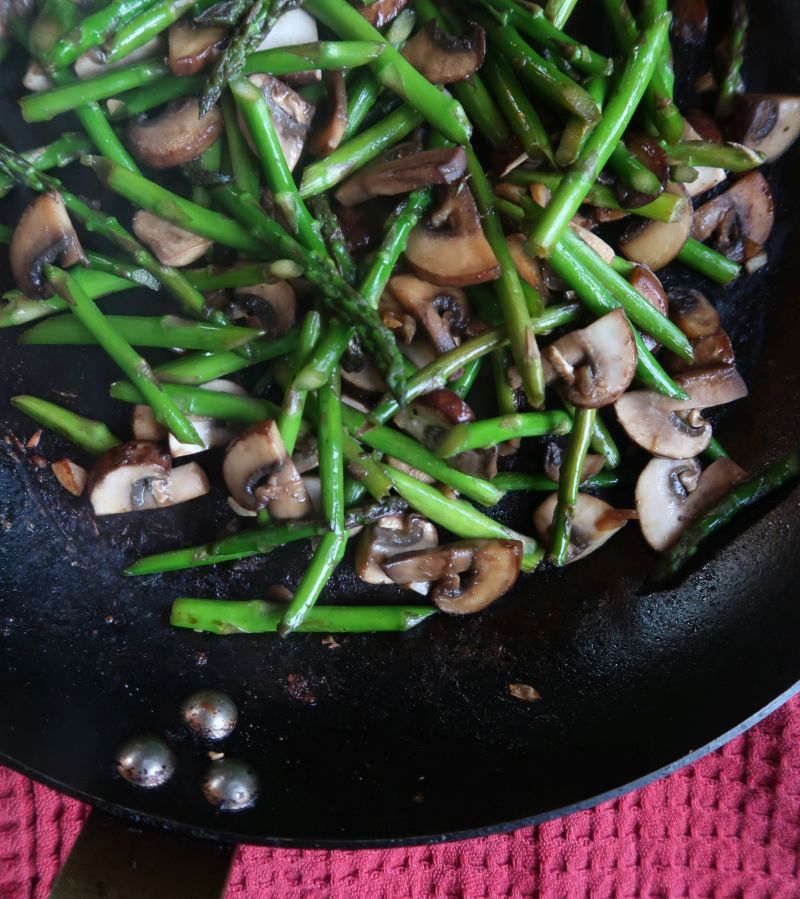
First thing I did was splashed some into an asparagus and mushroom saute. To make the dish: warm oil until hot, add the 6 sliced mushrooms, cook and splash in a bit of garum; once the mushrooms are glistening, add 4 to 5 ounces trimmed skinny asparagus and 1 finely chopped garlic clove, then cook and season with garum until tender crisp.
Normally, using unadulterated fish sauce would give off its seafood aroma. With the spiced garum, it didn’t. Instead the vegetables developed a different depth of flavor that I can only attribute to the spices and aromatics plus the touch of acid from the lime juice.
As for other uses, Apicius recipes are hard to follow so I’d take the lead from a website that described garum as the “ketchup of the gods in Imperial Rome." That's to say, play with it. Try it out in marinades, barbecue sauce, marinara sauce or a stew – any time you want a savory, spiced note. It adds a warm tone and depth to dishes. I’ll be tinkering with it more in the next few days and will report back.
In the meantime, make some and set it in the fridge. It’s fun to make your own condiment!
If you’re unsure about using lemongrass, be sure to check the Lemongrass 101 article for tips.
Vietnamese Food Any Day Events
- There are limited spots left for the 3/24 event in Los Angeles at Now Serving. RSVP to hear me and Evan Kleiman chat about the Viet food landscape.
- I'll be in Minneapolis for an incredible event at the Lynhall on 4/8 to explore this topic with local chefs and restaurateurs: "Insiders or Outsiders: Who Owns Asian Food?"
- The 5/4 and 5/5 Milk Street Kitchen cooking classes in Boston sold out fast. Sorry!
State Bird Garum
Ingredients
- 1 ⅓ cups fish sauce preferably Red Boat or one without sugar
- ⅓ cup fresh lime juice
- 2 whole cloves
- 1 Indian or Indonesian long pepper or 10 whole peppercorns
- 1- inch cinnamon stick
- ⅓ whole nutmeg see Note
- 1 garlic clove
- 1- inch section ginger peeled and sliced into 4 or 5 coins
- 1 small lemongrass stalk tough outer layers removed, trimmed of tough top and root bottom, then cut into 2-inch sections
Instructions
- Put the fish sauce and lime juice in a blender.
- Use a mortar and pestle to crush one spice at a time, starting with the cloves then working down to the nutmeg. Add the garlic and pound on it to crush it. Then add the ginger and finish with the lemongrass. Transfer the heady mixture to the blender. (If your mortar and pestle is small, do this in stages and add crushed ingredients to the blender.)
- Pulse and chop the mixture to break up the solids a bit more, 15 to 30 seconds total. Transfer to a glass jar, the cap and refrigerate for at least 12 hours or up to 1 month (the longer the better). Strain the mixture through a paper-lined mesh sieve, pressing on the solids to extra as much liquid as possible. Discard the solids.
- Keep the garum in an airtight container and keep refrigerated for up to 3 months.













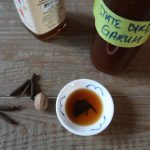




Elizabeth Andoh says
Interesting how so many ancient food cultures created a fermented fish sauce... In the northern part of Japan (Akita Prefecture in particular) a fish sauce called SHOTTSURU 秋田しょっつる has long, deep history. It is a fermented product similar to nampla. Shottsuru is made from HATAHATA fish (Arctoscopus japonicus or Japanese sandfish) https://en.wikipedia.org/wiki/Arctoscopus_japonicus
Andrea Nguyen says
Yes, to shottsuru. There was a spot for it at Uwajimaya but it was totally empty this week!
John says
You're brilliant!
Very knowledgeable and interesting!
Thank you,
J. Fott
Darlene Crane says
I'm vegan. What can I use in place of fish sauce?
Andrea Nguyen says
You can look for vegetarian fish sauce, sold mostly at Vietnamese markets. I don't know how they'd work for garum because it's a condiment fashioned from fish. I realize this may not be of much help to you but that's what I would try.
Hugh says
I guess colatura di alici (anchovy sauce) is the modern Italian vestige of garum. That said, as far as I know, colatura di alici isn’t used in sweet dishes the way Romans used garum (Apicius calls for it in a custard recipe if I remember right). I could be wrong though since I don’t eat fish and haven’t exactly sought the stuff out.